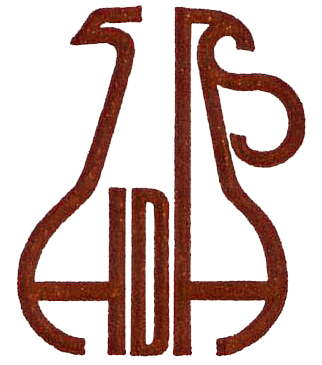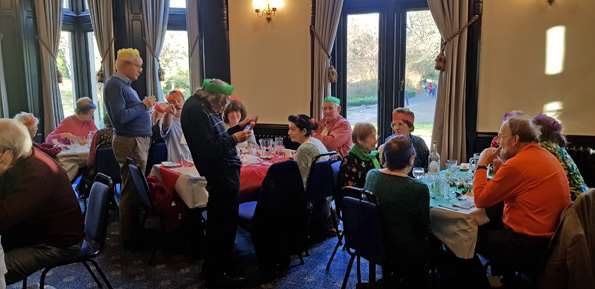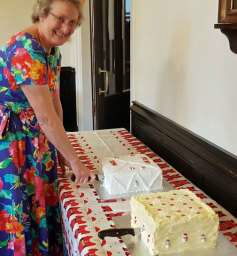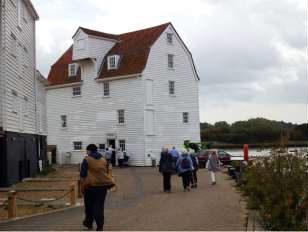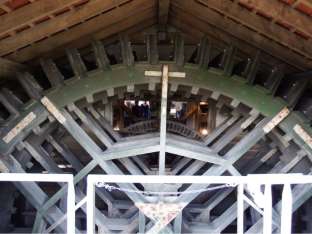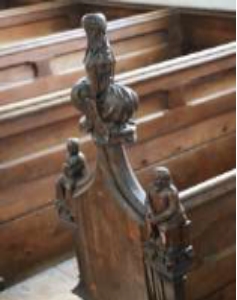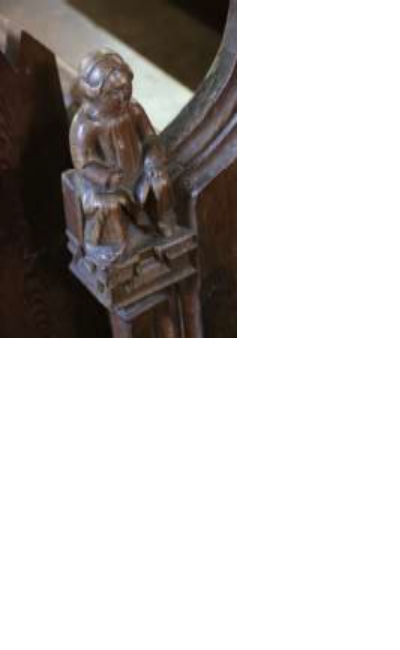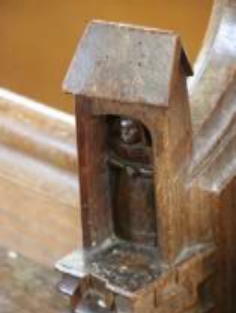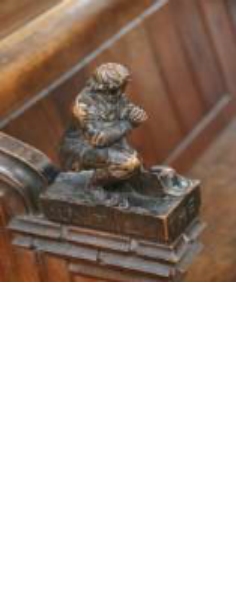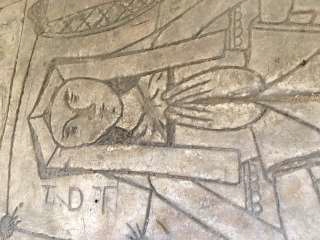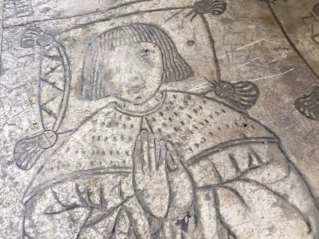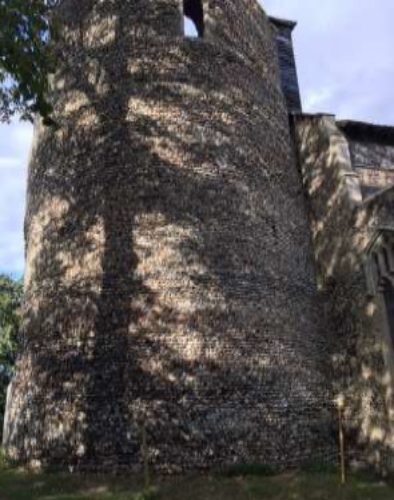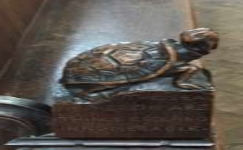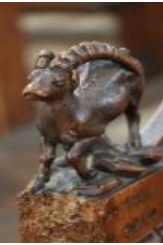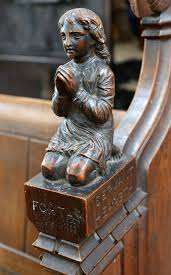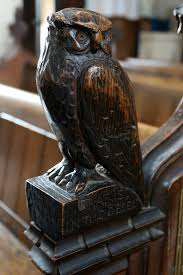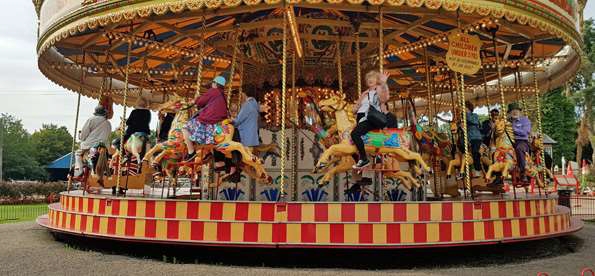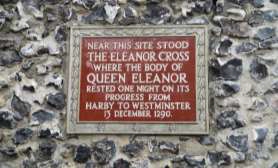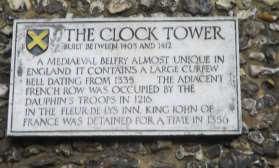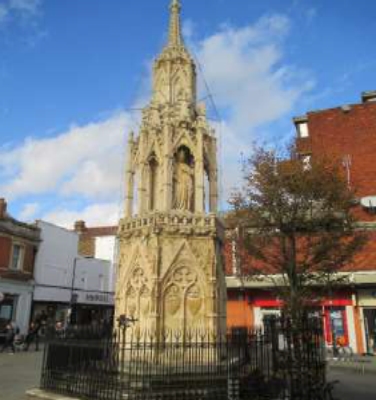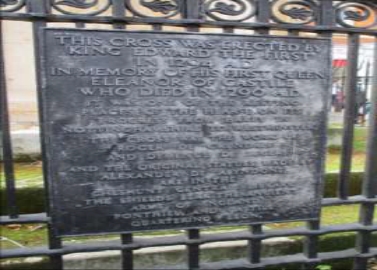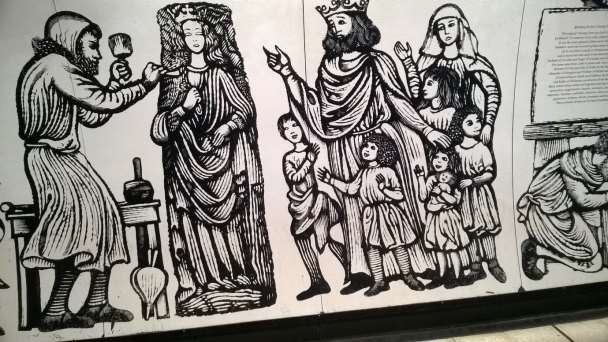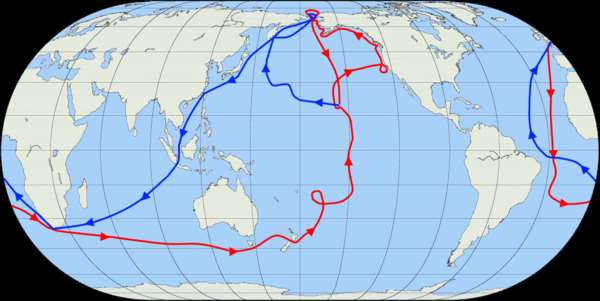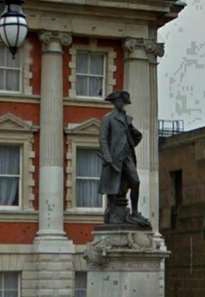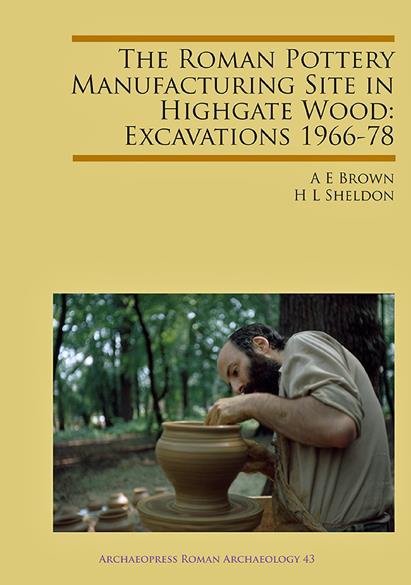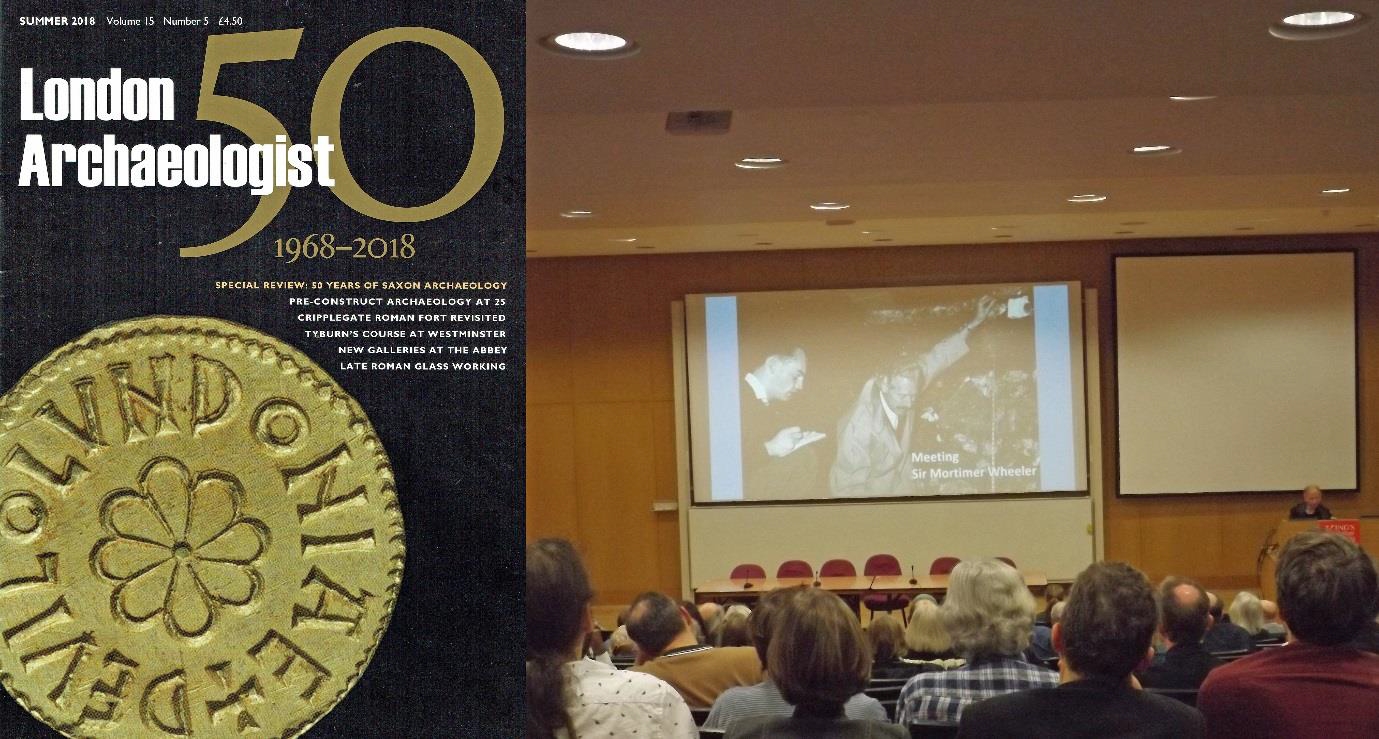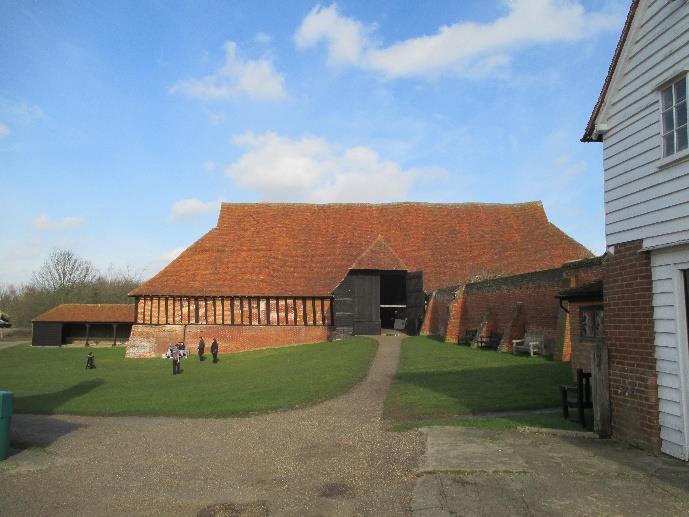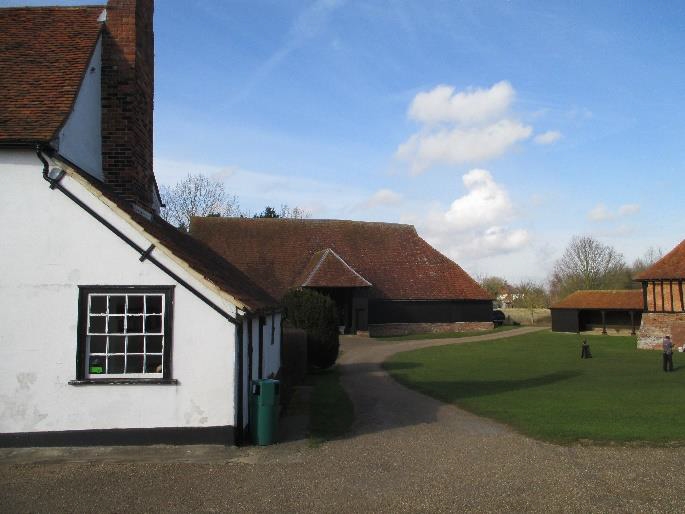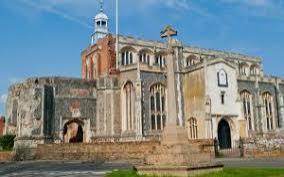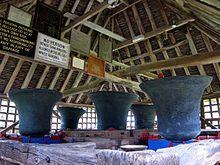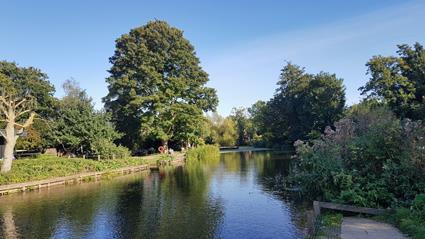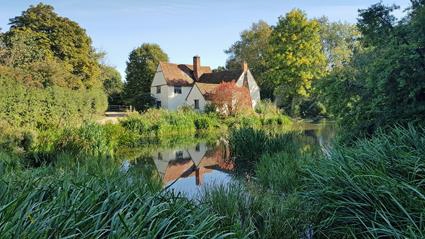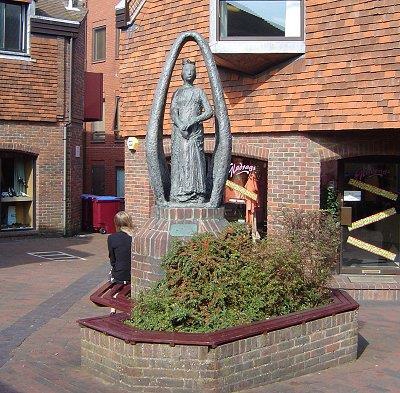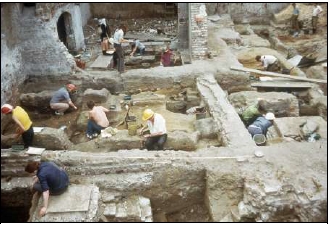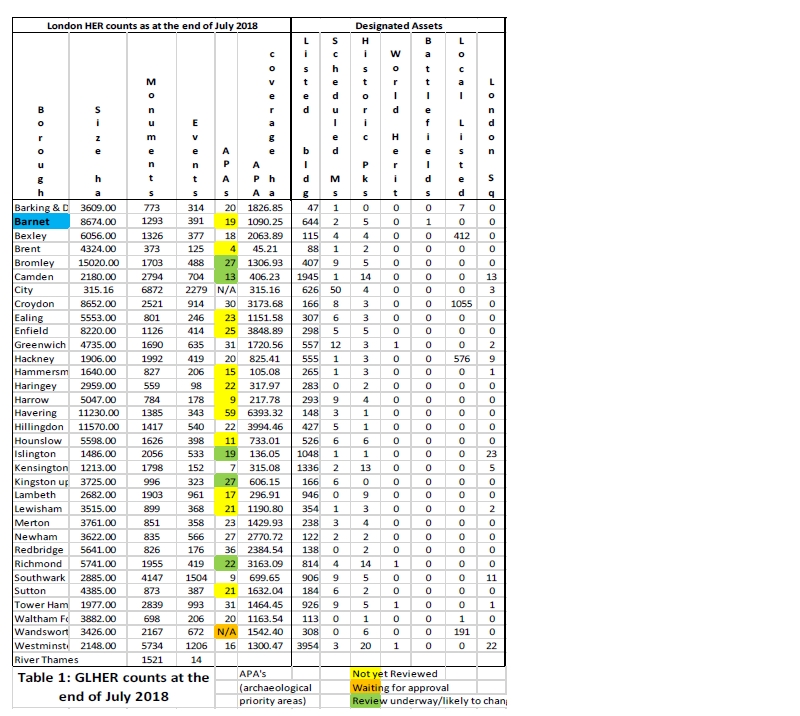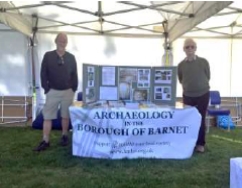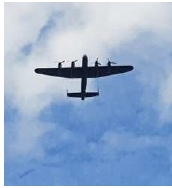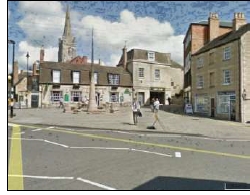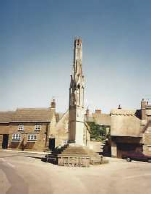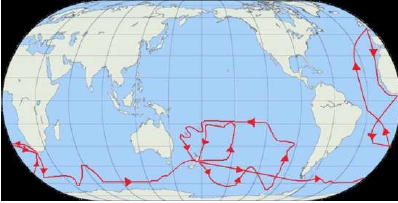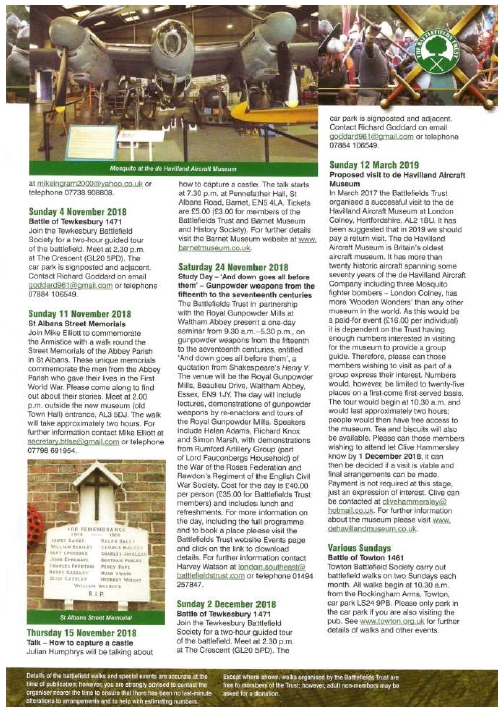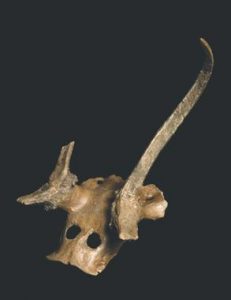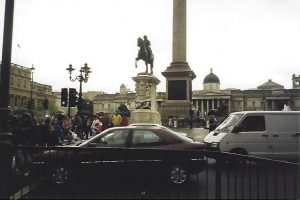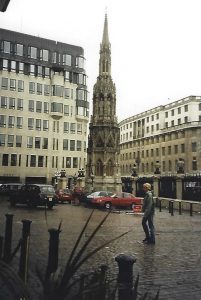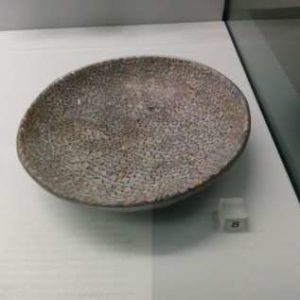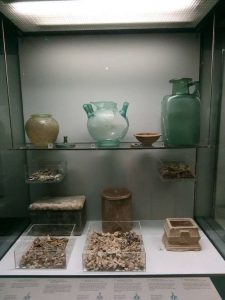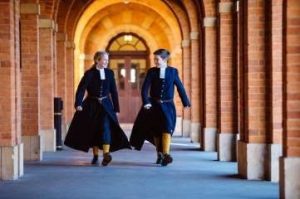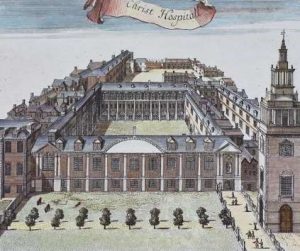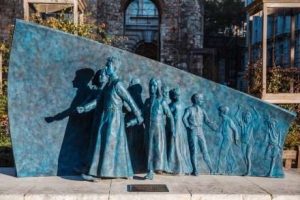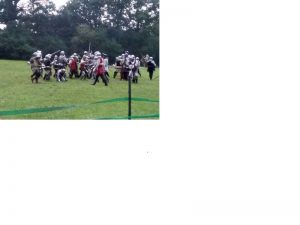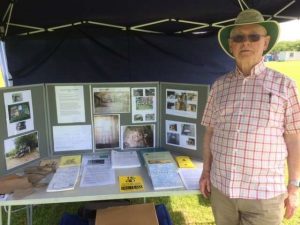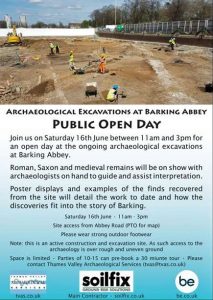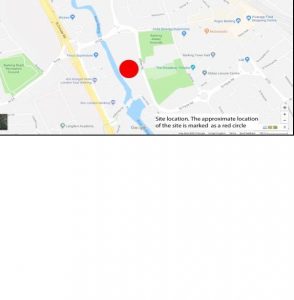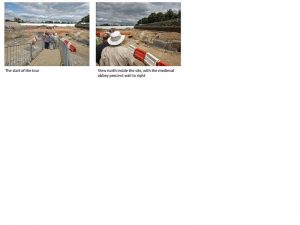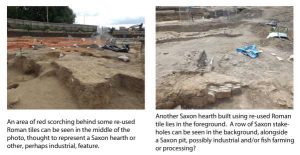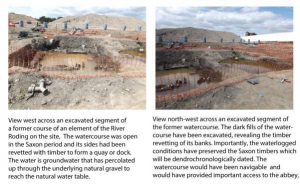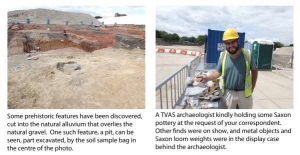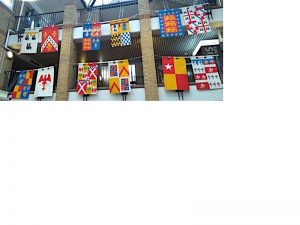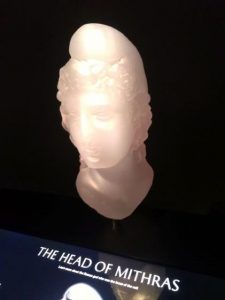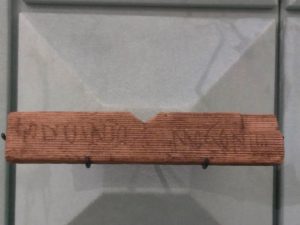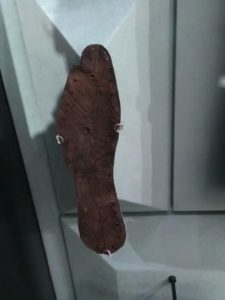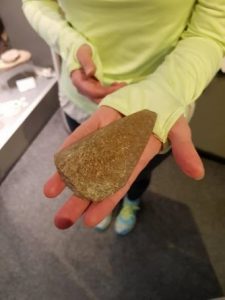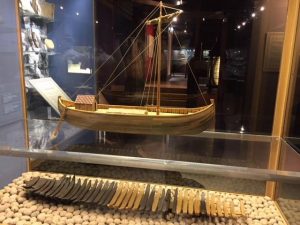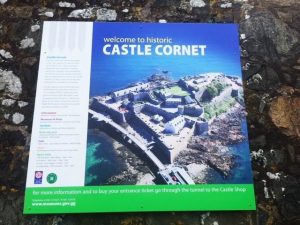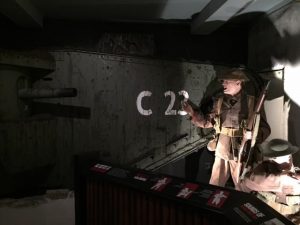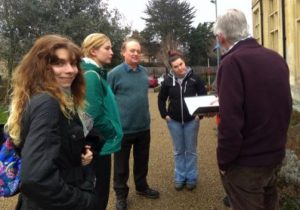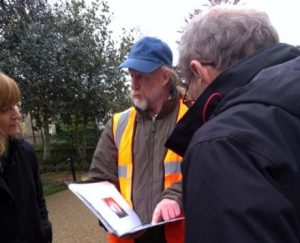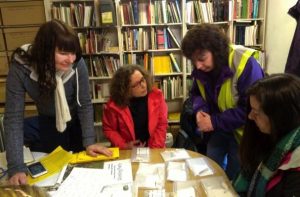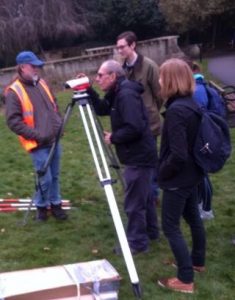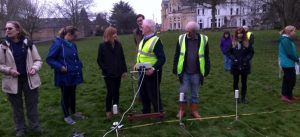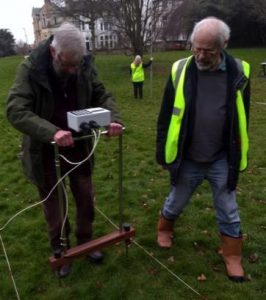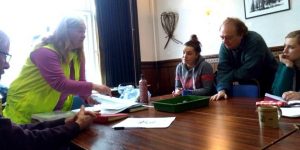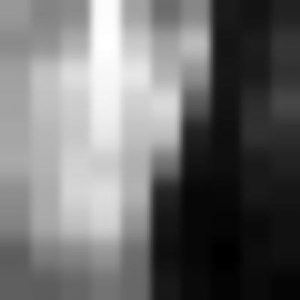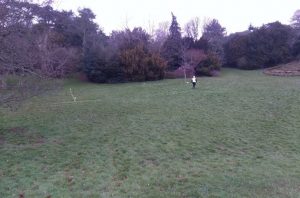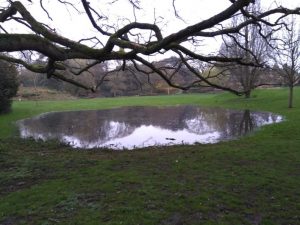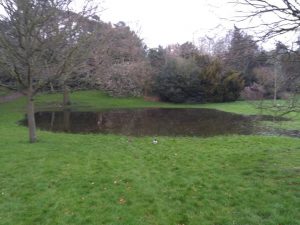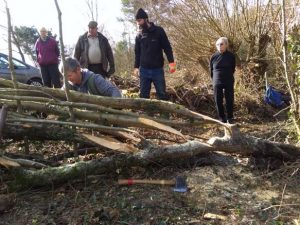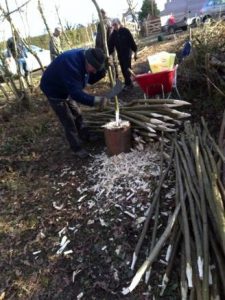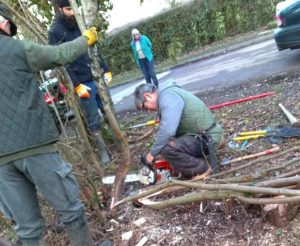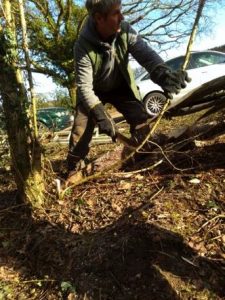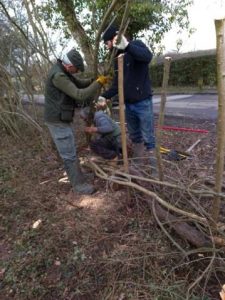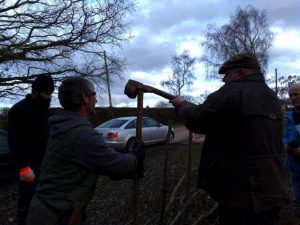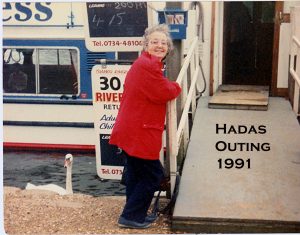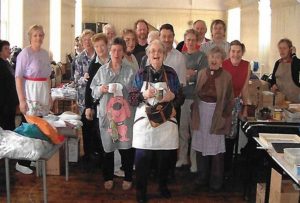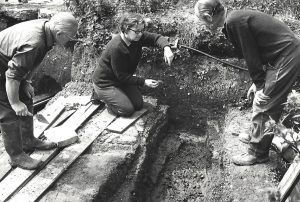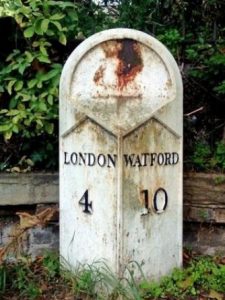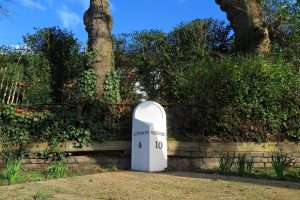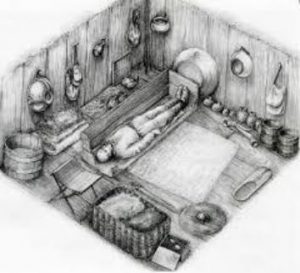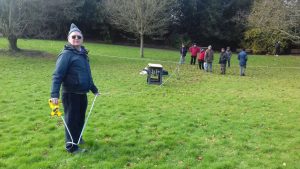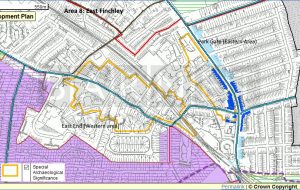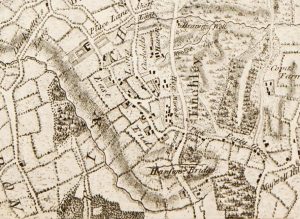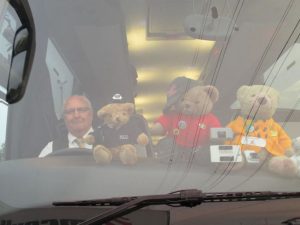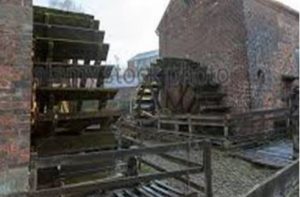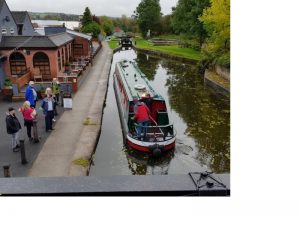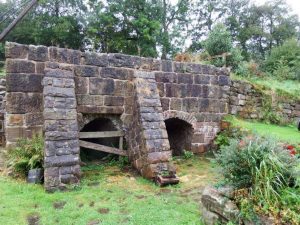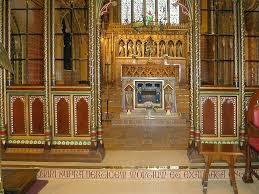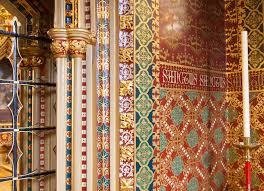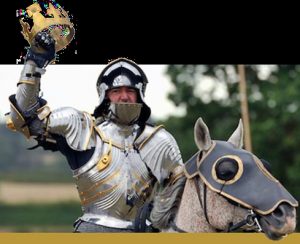No. 574 January 2019 Edited by Peter Pickering
____________________________________________________________________________________
HADAS DIARY – Forthcoming lectures and events
Tuesday 8th January 2019: NO LECTURE
Tuesday 12th February 2019: Dorothy Newbury Memorial Lecture.
Prehistory in London – some Problems, Progress and Potential by Jon Cotton
Tuesday 12th March 2019: Lost and Found: The Rediscovery of Roman London by John Clark
Tuesday 9th April 2019: The CITiZAN Project by Gustav Milne
Tuesday 14th May 2019 50 years of recording London’s Industrial Heritage Professor David Perrett
Tuesday 11th June 2019. ANNUAL GENERAL MEETING
HADAS 2019 Long Trip. Monday 23rd to Friday 27th September 2019
We have booked the hotel for our long trip in 2019. Details will follow in due course.
The hotel is: Best Western Aberavon Beach Hotel, Aberavon Beach, Port Talbot, SA12 6QP
Tuesday 8th October 2019: From Crosse and Blackwell to Crossrail – MOLA excavations at Tottenham
Court Road 2009–10 by Lyn Blackmore
Tuesday 12th November 2019: Shene and Syon: a royal and monastic landscape revealed by Bob
Cowie
Lectures start at 7.45 for 8.00pm in the Drawing Room, Avenue House, 17 East End Road, Finchley N3
3QE. Buses 13, 143, 326 & 460 pass close by, and it is five to ten minutes’ walk from Finchley Central
Station (Northern Line). Tea/coffee and biscuits follow the talk. .
Members please read and respond. Jo Nelhams
The HADAS lectures clash with the LAMAS lectures on the 2nd Tuesday of each month, which some
members like to attend. A proposal was discussed with the Committee that in 2020 the HADAS Lectures
be moved to the 3rd Tuesday of each month. The 2019 lectures will continue on the 2nd Tuesday, as
these are all booked.
PLEASE RESPOND TO THE SECRETARY BY EMAIL, LETTER OR PHONE BY JANUARY
31ST 2019 CONTACT DETAILS ON THE BACK PAGE OF THIS NEWSLETTER.
Farewell to a long standing member
It is with great regret that we have received the very sad news that Henry Burgess (better known as
Harry) passed away on November 6th, in the Arkley Care Home. Harry was a long standing member
having joined HADAS in April 1994. He was involved with a variety of interests. He was a keen metal
detectorist with the Herts & District Metal Detectoring Society, venturing out into the Hertfordshire and
Cambridgeshire countryside, on their approved sites. He also loaned equipment and provided guidance
for some exploration of the Battle of Barnet site. Harry was also a member of the East Barnet Shooting
Club, enjoying pistol shooting, and was also on their rota for duties, both opening and closing the club on
Thursday evenings, and recording the members’ scorecards in their club competitions. Harry also
dedicated over 25 years service to the Royal National Lifeboat Institution as a volunteer fundraiser and
souvenir secretary of the local RNLI branch, Barnet, Finchley & Friern Barnet District.
His main career was spent working at the BBC TV Centre where he was a supervisor in the
Mechanical Engineering workshop. It was their responsibility to maintain the studio equipment monitors,
camera and lenses etc, until the corporation decided to shut the workshop and outsource the service. His
later work was locally at the Homebase Store in New Southgate, until retirement age.
Harry also enjoyed the HADAS holidays, organised by Jim & Jo, and went on many, both
individually, and later on with his wife Marilyn, when she too retired. Unfortunately, ill health prevented
Harry from being an active member since 2016, and also Marilyn, who became his full time carer. He did
however keep up to date with the Society’s activities as he was an avid reader of the newsletters.
HADAS Christmas party 2018 by Don Cooper
The HADAS Christmas party this year took place on Sunday, 9th December 2018. This year the weather
was kind to us, unlike last year when only a small number made it to the party because of snow.
Thirty-two members and their guests assembled at 12.30 at Avenue House on the Stephens House and
Gardens estate for nibbles and drinks before sitting down to a festive meal of turkey or salmon with all
the trimmings followed by Christmas pudding with cream and brandy butter, or fresh fruit salad and
cream.
To make sure we kept mentally alert, Vicki Baldwin
produced a table quiz full of intriguing questions.
After eating our fill and doing our best in the quiz, it was
time to draw the raffle with its many prizes and announce the
answers to the quiz. This was followed by coffee or tea,
mince pies and/or a slice of the cakes that Liz made.
The most important part of the Christmas party is to meet up
with friends and catch up with all their news.
All-in-all the party was a great success and thanks are due to
Peter Pickering for his part in the organisation, Vicki
Baldwin for the Quiz, Liz Gapp for the cakes, Jo Nelhams,
Melvyn Dresner and Andy Simpson who helped decorate the
room and all who contributed to the raffle prizes.
The Rose Theatre: Shakespeare’s Secret Playhouse presented by Suzanne Marie Taylor on
13th November Liz Gapp
The November 2018 meeting took the innovative form of a short introduction by Suzanne Marie Taylor
to a 30 minute film called Shakespeare’s Secret Playhouse, which was funded and produced by herself
and Anthony Lewis. Both of them had main narrative roles in the film, which tells the story of the
discovery and excavation of the remains of the Rose theatre.
As Sir Ian McKellen, the renowned actor, had been heavily involved in the movement to preserve
the Rose theatre, he was contacted to see if he would contribute his views. To their great delight, they
were invited to meet him at his house. They took some pipe replicas of pipes found in the Rose
excavation. This was fortuitous as they found he collects pipes.
Suzanne outlined the structure of the film, designed to appeal to schoolchildren as well as adults.
For example, there was a portrait of Shakespeare whose mouth and eyes moved at appropriate times and
also included a spoof film called The Lost Valley of London throughout conducted by Anthony Lewis in
intrepid English Safari Hunter role.
After an initial glitch with the sound equipment, the film started with Anthony walking to where
the Rose was found. Simon Hughes, the local MP at the time, sets the scene, explaining why all the
entertainment, including the theatres, was situated outside the City of London in the sixteenth century.
The Rose theatre constructed in 1587 was the first of the Elizabethan theatres to be built. It survived until
1605 when it was abandoned due to proposed lease increases which Philip Henslowe refused.
Julian Boucher, Senior Finds Specialist at MOLA, who excavated the Rose in 1988-9, gave a tour
round the present day site. This showed the water preserving the site, and the red lines highlighting the
foundations of the Rose. From these red lines a series of drawings, starting from ground level and going
to the final theatre drawing, showed the presumed structure of the theatre.
Ian McKellen describes the theatre project going public and the reason for the campaign to
preserve it. Later, he describes his surprise at how small the Rose theatre was, and that the actors were in
easy reach of the audience which was in the open air. An interesting innovation was the auditorium raked
for easier viewing. The entire Rose would fit into the auditorium at the modern Globe theatre.
Harvey Sheldon, chairman of the Rose Board of Trustees, described discovering the Rose theatre
remains 30 years ago, and the reason for the foundation of the Trust to preserve it.
Many valuable papers relating to the Rose theatre are kept at Dulwich College, deposited by
Edward Alleyn, the eminent contemporary actor who founded the College of God’s Gift, now Dulwich
College. Shown in the film was the Diary and Accounts book for the Rose kept by Philip Henslowe, his
father-in-law,- a copy of this book is available from Foakes 2nd Edition by Philip Henslowe. Starting in
1592, with renovation details of the theatre, it lists performance and income details of a Hamlet and a
King Lear predating Shakespeare’s first known performance of his plays of those names. Also included is
Henry VI part I, premiered at the Rose on 3 March 1592.
The discovery of the Rose theatre was due to the demolishing of Southbridge House which had
been built over two thirds of the Rose and was to be replaced by a new office block due to be built by
Ivory Merchant, which in its original design would have destroyed the Rose remains.
Scholars, the theatrical world, and the general public worldwide felt that the Rose was so
important historically that its remains should not be destroyed. This sentiment resulted in a concert to
create publicity to put pressure on the government to get the Rose preserved. A huge gathering in 1989
including the theatrical world’s pre-eminent people (Dustin Hoffman, Vanessa Redgrave, Judy Dench,
Irene Worth, Dame Peggy Ashcroft etc.) It culminated in a recorded amended speech from Henry V by
Sir Laurence Olivier, who was too ill to attend. The recording was organised by his son, Richard, and
ended ‘Thank God for Harry, England and the Rose’. The government backed down and provided a £1
million grant. One consequence was Planning Policy Guidance 16, which made archaeological
investigation a condition of planning permission, rather than discoveries being made haphazardly, thus
upsetting building schedules.
Jane Siddell, PhD, MCIfA, describes how she looks at the water quality once a month to check the
site is neither too dry, acidic or alkaline. There is apparatus to monitor the oxygen levels – the lower the
better for anaerobic preservation of the remains.
Many more people appeared in the film. It described the demands on the Elizabethan actors, by
Lizzie Conrad Hughes, Rose Volunteer and actress. Play runs were for 1, 2, or, if popular, 3 days. If there
was a new play, there would be 5 or 6 weeks to learn it, while maintaining the play run schedules. A play
could be put on at a day’s notice, so the actors had to have an active knowledge of 30-40 parts at one
time.
There was a new design by Sir Nicholas Helm RIBA, who describes the redesign. The new
building is called Rose Court. The theatre’s remains are covered in sand and water to preserve them for
the future. This had to be done to replicate the original anaerobic marshy conditions that had preserved it
since its original burial. Red lighting outlines the theatre, and a viewing platform has been built, which
also allows actors to play to an audience of about 50 people.
The website for the Rose theatre is roseplayhouse.org.uk which is available for all who wish to
know about the project and possibly offer their help.
The film is on YouTube, entitled Shakespeare’s Secret Playhouse: The Lost Valley of London.
Brome Trip day 3 Jim Nelhams
Wednesday dawned bright and breezy. We had planned a leisurely start leaving at 9:00 for a two-hour
boat trip on the River Deben. This would give us a view of our second stop at Woodbridge Tidal Mill and
the country adjoining Sutton Hoo. As the mill only operates following high tide, we had a fixed
appointment to visit it. At 8:15, we received a call to say that because of expected high winds, the boat
operators had cancelled the trip as being potentially unsafe. Luckily, in our planning, we had identified
another possible visit in the same area – so off we went to Orford Castle.
Orford Castle Jim Nelhams
We had not visited the castle beforehand, so our information came from the English Heritage handbook.
We emailed ahead to announce our visit, but our message was not read until after we arrived. Access and
parking proved to be difficult for our coach, as was pedestrian access, with wheelchairs impossible, and
no toilets. Thanks to Simon Williams for accepting this and setting off in his buggy to explore the village.
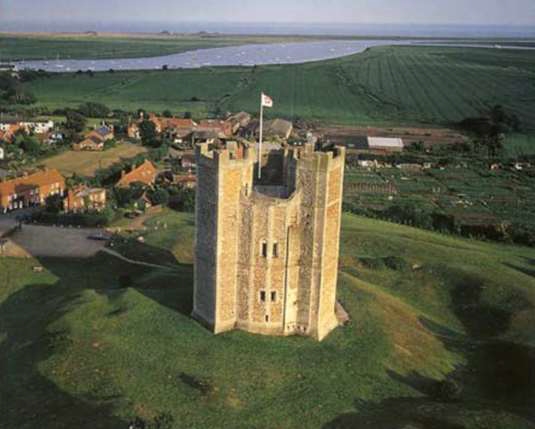
The castle was built by Henry II in the twelfth century to protect against foreign invasion. Its position on
high ground provides a good view of the coast, and the access from the coast to Framlingham Castle,
owned by Henry’s rival, Hugh Bigod. In World War 2, this function continued as it served as a radar
station.
Only the keep of the castle remains, surrounded by extensive earthworks. Archaeologists have
excavated parts of the original curtain wall, but the task is incomplete. We are used to keeps that are
square or rectangular – not so Orford. The main section is circular, a basement containing the well, and
two high halls, one above the other. Surrounding the core are three towers, one, slightly larger than the
others, containing the staircase. The halls have two floors of side rooms in each tower. The innovative
layout of the halls provided a grand and impressive residence.
Clearly the Chaplain must have remained in his chapel for long hours, since he was provided with
his own latrine.
In the upper hall is an exhibition curated by the Orford Museum Trust, with documents and artefacts
of local interest. From the roof, there is a good and strategic view of the surrounding countryside and
coast.
Time to visit the village centre for a coffee.
WOODBRIDGE TIDE MILL – molendinium aquaticum marinum. Vicki Baldwin
In common with so many other examples of our working industrial and pre-industrial heritage,
Woodbridge Tide Mill owes its continued existence to a small band of dedicated volunteers.
A mill at this location is first referred to in a 12th century document granting Baldwin of Ufford
easier access to his mill. In the Middle Ages the mill was a source of income for the local Augustinian
Priory. It was listed as a valuable asset in 1340, but when the Bishop of Norwich visited 200 years later,
the parlous state of the mill was blamed for the poverty of the Priory. However, if the Priors did
redevelop the mill, as Woodbridge Priory was one of Henry VIII’s early casualties during the Dissolution
of the Monasteries, the church would not have reaped the benefit. The person to whom the Priory’s land
and mill were granted, Sir John Wingfield, had no family and the property reverted to the Crown upon his
death. Elizabeth I granted the estate to Thomas Seckford for £764 8s 4d. The Mill subsequently passed
into the ownership of a succession of families until in 1808, following substantial redevelopment, it was
sold by the Cutting family. The current building probably dates to this time and has only survived the
subsequent changes to the milling methods and machinery due to the fact that in the late nineteenth
century the then owners, A. Hayward and Sons, had it enclosed in corrugated iron sheeting. Unattractive
to the artists and photographers maybe, but an armour that enabled the structure to withstand the
introduction of a diesel engine and hammer mill in the 1950s.
The tide mill featured in the Craftsman series made by the Shell Company film unit. But it was
already in disrepair, having staggered on for the previous 30 years in need of replacements for vital worn
parts of the mechanism. An appeal for funds enabled the roof to be repaired, but in 1957 the 22 inch
square oak shaft broke. This would have been the end of tidal powered milling on the Deben if it had not
been for the efforts of local enthusiasts. Following a talk by local historian Norman Scarfe in 1968, Mrs
Jean Gardner discussed with him the possibility of purchasing the mill at auction with the intention of
restoring it. She was successful in her bid and subsequently the Woodbridge Tide Mill Trust was formed.
They have managed to restore the mill to a working condition and indeed it is possible to purchase flour
ground by the mill in the gift shop. Very good it is too! Keeping the mill in good enough repair for
visitors to appreciate this historic building means a constant fight for grants and funding. If you have the
chance, this is a fascinating place to visit if you are in the area. https://woodbridgetidemill.org.uk/
Sutton Hoo Dudley Miles
Sutton Hoo is the most important archaeological site in Britain, and it revolutionised historians’ views of
the so-called Dark Ages, showing that they were capable of producing treasures of the highest quality and
sophistication. In 1939 Edith Pretty commissioned Basil Brown to excavate mysterious mounds on her
land, and he found the tomb of a seventh-century king, perhaps Rædwald of East Anglia.
Almost all HADAS members will have seen the treasures from the site in the British Museum, but
the displays in the site museum include replicas of the most important artefacts such as the wonderful
helmet, purse lid and belt buckle. There are also original finds such as from the burial of a young warrior
with his horse.
Edith Pretty’s house has been restored to give a picture of how it would have looked in the 1930s,
and several people said that it was more interesting than the site museum. It was an interesting experience
standing on the mound of the famous ship burial, but the view of it from the nearby viewing platform is
blocked by a tree.
The site is now closed for refurbishment.
OTHER SOCIETIES’ EVENTS compiled by Eric Morgan
Please check with the organisations before setting out in case of any changes / cancellations.
Many organisations expect a small contribution from visitors.
Tuesday 8th January 7.45 pm Amateur Geological Society Finchley Baptist Church Hall East
End Road opposite Avenue House What gives minerals and gemstones their colour? Talk by Robin
Hansen
Thursday 31st January 2.30 pm. Finchley Society. Drawing Room, Avenue House The Highgate
Society, Past Present and Future Talk by Elspeth Clements (Chair) and Jan Morgan on the highs
and lows of planning applications. NOTE AFTERNOON MEETING
Sunday 3rd February 10.30 am Heath and Hampstead Society. Guided walk on the history of the
Hampstead Heath ponds. Led by Marc Hutchinson. Meet at Burgh House, New End Square NW3 1LT.
Lasts about two hours. Donation £5.
Thursday 7th February 7.30 pm Camden History Society Burgh House, New End Square NW3
1LT The campaigns to save Kenwood. Talk by Helen Lawrence.
Thursday 7th February 8.00 pm Pinner Local History Society Village Hall, Chapel Lane car
park, Pinner HA5 1AB. Gog and Magog – Giants in the Guildhall (London’s legendary guardians).
Talk by John Clark
Tuesday 12th February 1.00 pm Society of Antiquaries Burlington House, Piccadilly W1 Anne
Mowbray Duchess of York, a 15th century child burial from London. Talk by Bruce Watson. Free –
limited places, book on www.sal.org.uk or 020-7479 7080.
Wednesday 13th February 7.45 pm Hornsey Historical Society. Union Church Hall, corner
Ferme Park Road/Weston Park N8 9PX. The history of the Regent’s canal Talk by Roger Squires
Friday 15th February 7.30 pm. Wembley History Society English Martyrs’ Hall, Chalkhill
Road, Wembley, HA9 9EW (top of Blackbird Hill, adjacent to church) The General strike in
Wembley and Willesden Talk by Christine Coates.
Friday 15th February 7.00 pm. City of London Archaeological Society. St Olave’s Church Hall,
Mark Lane EC3R 7BB Thames Landing Craft. Presidential address given by Gustav Milne about
the causeways, river stairs and ferry terminals on the tidal Thames. Preceded by AGM.
Monday 18th February 8.15 pm Ruislip, Northwood and Eastcote Local History Society
St Martin’s church hall High Street Ruislip Saxons at the Adelphi, Strand. Talk by Douglas Killock.
Wednesday 20th February 8.00 pm. Edmonton Hundred Historical Society. Jubilee Hall,
2 Parsonage Lane/junction Chase Side, Enfield EN2 0AJ Evacuees in World War II. Mike Brown.
Wednesday 20th February 7.30 pm. Willesden Local History Society. St Mary’s church hall,
Neasden Lane, NW10 2TS (nr Magistrates Court) Living in Meyrick Road Church End. Talk by
Sophia MacGibbon on the origins of the people who moved to this working class street.
Tuesday 26th February 10.30 am. Enfield Society Jubilee Hall, 2 Parsonage Lane/junction Chase
Side, Enfield EN2 0AJ. The History of Quilling. Talk by Judith and Christine Hughes.
Wednesday 27th February 10.30 am. Enfield Society Jubilee Hall, 2 Parsonage Lane/junction
Chase Side, Enfield EN2 0AJ. Charles Lamb in Enfield and Edmonton. Talk by Joe Studman.
Wednesday 27th February 7.45 pm Friern Barnet and District Local History Society North
Middlesex Golf Club, The Manor House, Friern Barnet Lane N20 0NL. Dabs and DNA detects
criminals Talk by Chris Truran
Thursday 28th February 2.30 pm. Finchley Society. Drawing Room, Avenue House
Improvements to Victoria Park – latest developments Talk by Matthew Gunyon, Barnet Council
Green Spaces team. NOTE AFTERNOON MEETING
Friday 8th and Saturday 9th March. Current Archaeology Live 2019. Conference in the
University of London Senate House, Malet Street WC1E 7HU. Wide range of expert speakers
sharing the latest archaeological finds and research. For details and tickets visit
www.archaeologylive.co.uk or ring 020 8819 5580
With many thanks to this month’s contributors: Jo and Jim Nelhams, Don Cooper, Liz Gapp,
Vicki Baldwin, Dudley Miles and Eric Morgan
Hendon and District Archaeological Society
Chairman Don Cooper 59, Potters Road, Barnet EN5 5HS (020 8440 4350)
e-mail: chairman@hadas.org.uk
Hon. Secretary Jo Nelhams 61 Potters Road Barnet EN5 5HS (020 8449 7076)
e-mail: secretary@hadas.org.uk
Hon. Treasurer Jim Nelhams 61 Potters Road Barnet EN5 5HS (020 8449 7076)
e-mail: treasurer@hadas.org.uk
Membership Sec. Stephen Brunning 22 Goodwin Court, 52 Church Hill Road, East Barnet
EN4 8FH (0208 440 8421) e-mail: membership@hadas.org.uk
